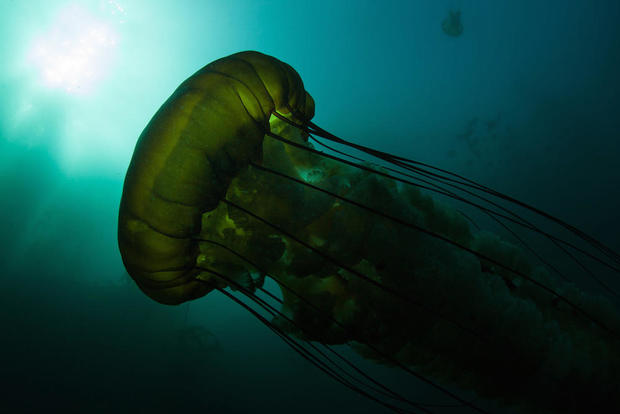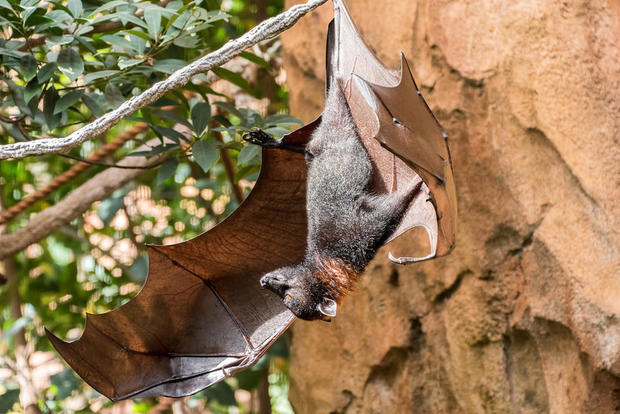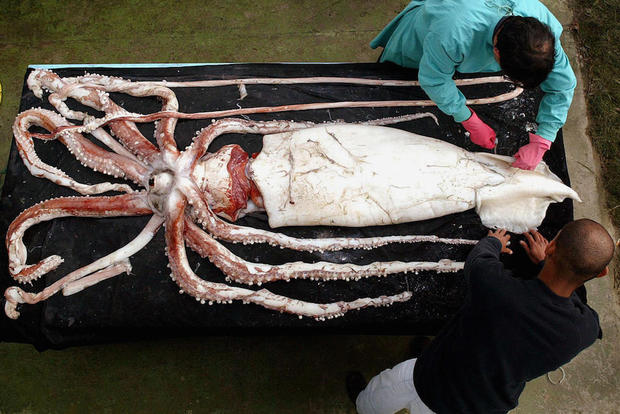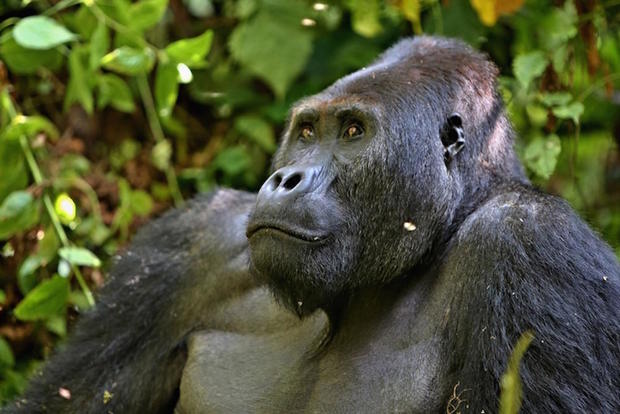CBS NEWS
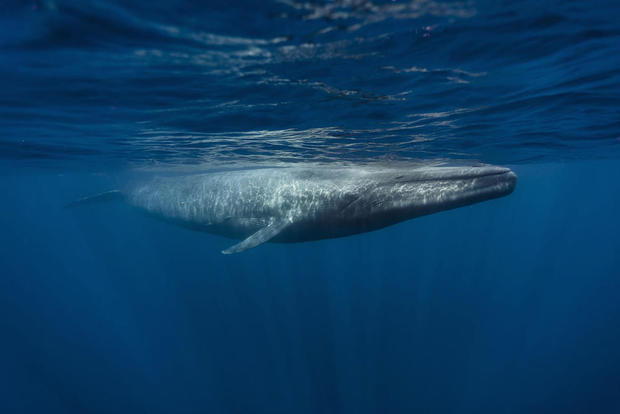
SHUTTERSTOCK
The largest living animal in the world is the blue whale (Balaenoptera musculus), a beast measuring 70 feet (21 meters) long. But enough about the whale. What is the largest bird, butterfly or marsupial? Live Science found 15 of the largest animals of their kind. Read on to find out who they are.
By Laura Geggel / Originally published on Live Science.
Largest bird
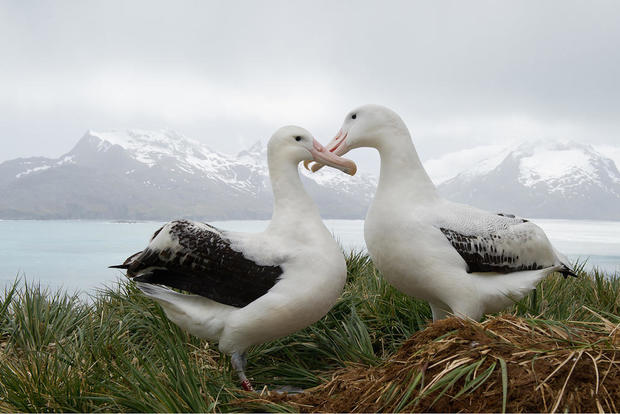
SHUTTERSTOCK
With a wingspan measuring up to 11.5 feet long, the wandering albatross (Diomedea exulans) is the largest living bird on Earth.
The largest bird species on record (Pelagornis sandersi) is now extinct. Its wingspan measured between 20 and 24 feet, twice as long as the modern wandering albatross's wingspan, said Daniel Ksepka, a paleontologist and curator of science at the Bruce Museum in Greenwich, Connecticut.
The heaviest living bird is the ostrich, which weighs an average of 244 lbs. The heaviest extinct bird is either the elephant bird (Aepyornis maximus) or the moa (Dinornis robustus). While the science community is split, "if you put a gun to my head, I would say Aepyornis maximus and go with 500 kg [1,100 lbs.] as the likely mass," Ksepka said. "They were, of course, flightless."
Biggest butterfly

SHUTTERSTOCK
The Queen Alexandra's birdwing (Ornithoptera alexandrae) wins first place for largest living butterfly. Its wingspan is almost 1 foot across.
However, O. alexandrae is rare — it lives in the rainforests of Papua New Guinea — and the International Union for Conservation of Nature (IUCN) lists this butterfly as endangered.
Females of the species are brown and have a wingspan of 11 to 12 inches, while the yellow, green, black and blue males are slightly smaller, with wingspans of 6.7 to 7.4 inches long, Live Science previously reported.
Largest rodent
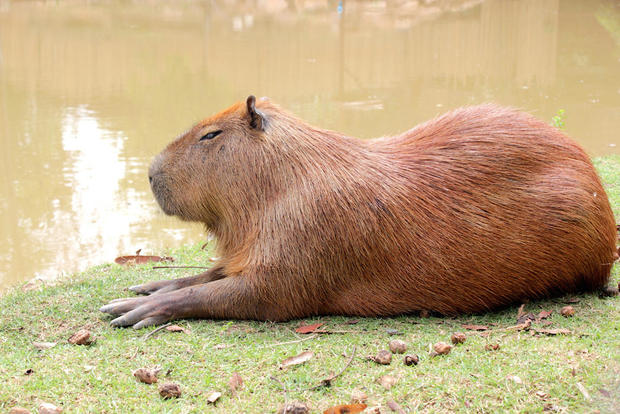
SHUTTERSTOCK
The capybara (Hydrochoerus hydrochaeris) is the king of rodents. It stands about 2 feet tall at its shoulders, making it the largest living rodent on Earth, according to the San Diego Zoo.
The capybara is larger than its living relatives, cavies and guinea pigs. It can be found on land or wallowing in the water, where it can swim with its slightly webbed feet. The enormous rodents are native to South America.
Largest mollusk
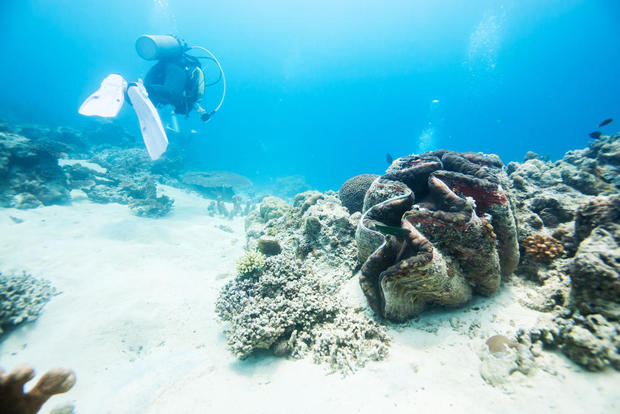
SHUTTERSTOCK
Reaching lengths of up to 4 feet and weighing more than 500 lbs., the largest living mollusk, and bivalve for that matter, is the giant clam (Tridacna gigas).
The giant shipworm (Kuphus polythalamia) is just a tad longer, though it weighs much less. This weird marine mollusk, whose shells look like an elephant tusk, measures between 3 and 5 feet long. The animal inside is black and slimy, and measures about the length of a baseball bat, Live Science reported previously.


Largest fish
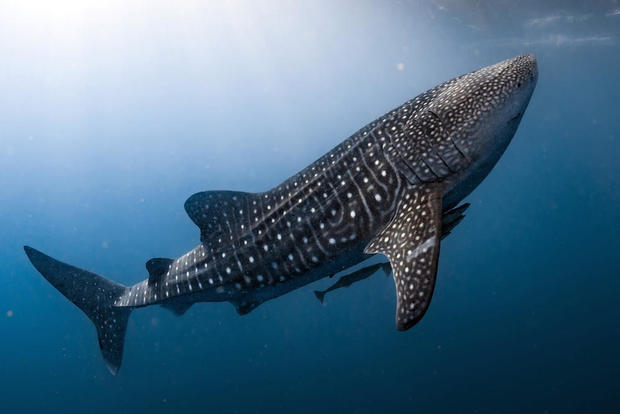
SHUTTERSTOCK
The largest fish is the whale shark (Rhincodon typus), which can reach up to 40 feet long. The colossal fish weighs about 20.6 tons, about the weight of two school buses.
These filter feeders live in tropical waters in the Atlantic Ocean and Indo-Pacific. However, the gentle giants are often caught by fisheries, tangled in nets as bycatch or struck by marine vessels. The IUCN lists the fish as endangered.
Largest marsupial
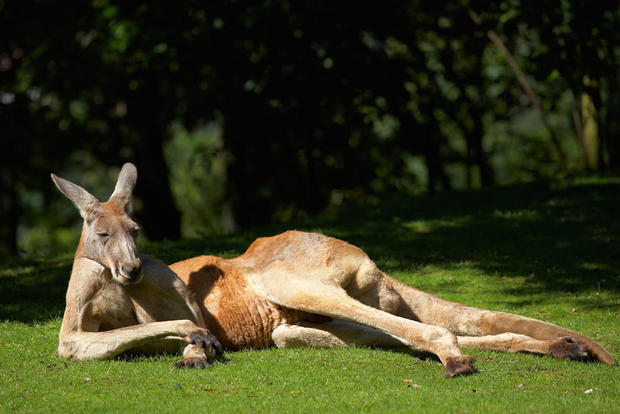
SHUTTERSTOCK
The red kangaroo (Macropus rufus) is the largest living marsupial in the world. It measures up to 5.3 feet from its head to rump, and its tail can be up to 3.6 feet long, according to National Geographic. The marsupial weighs about 200 lbs.
However, M. rufus isn't the largest kangaroo on record. That honor goes to the giant short-faced kangaroo (Procoptodon goliah), which was more than twice as heavy, at 529 lbs., Live Science previously reported. That animal went extinct about 15,000 years ago, according to the Australian Museum.
The largest marsupial on record is the four-legged Diprotodon optatum, which looked somewhat like a bear. It was 5.5 feet tall at its shoulders and just under 13 feet long, and it weighed up to 6,100 lbs. This animal went extinct about 25,000 years ago, according to the Australian Museum.
Longest snake
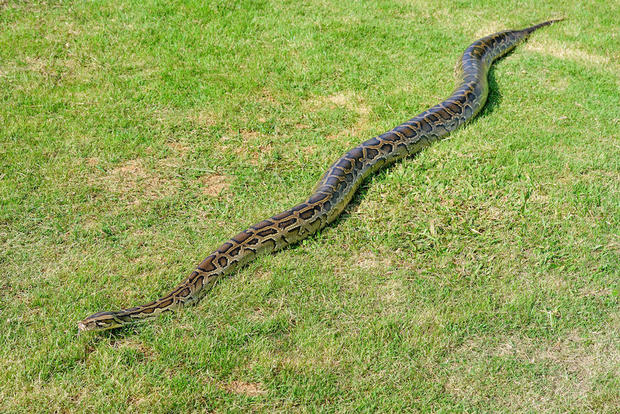
SHUTTERSTOCK
Out of 41 species, the reticulated python is the longest python (and snake) on record.
The longest known reticulated python measured 26.2 feet long, longer than five grand pianos lined up. It was found at a construction site in Malaysia in April 2016, and died shortly after its capture, Live Science previously reported.
That Malaysian snake was longer than Medusa, the longest captive snake in the world, which measured 25.1 feet, according to Guinness World Records.
Largest lizard
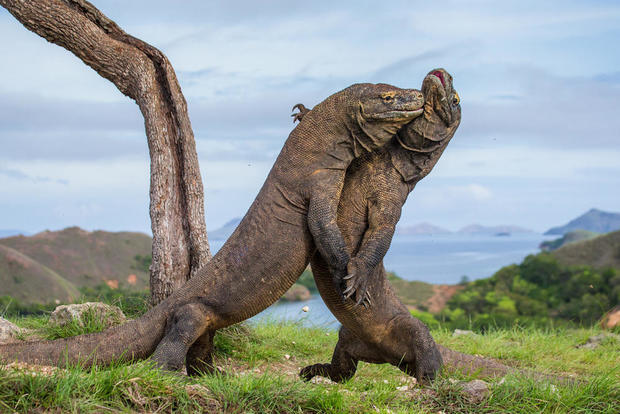
SHUTTERSTOCK
The fierce, fork-tongued komodo dragon (Varanus komodoensis) is the largest living lizard.
Male Komodo dragons measure up to 10 feet long and weigh about 200 lbs. Females are a bit smaller, growing up to 6 feet in length, Live Science previously reported.
The speedy predators have good vision and excellent senses of smell, which help them hunt large prey such as water buffalo, deer, pigs and even humans — so keep your distance!
Largest frog

IMAGEBROKER / ALAMY STOCK PHOTO

The goliath frog (Conraua goliath) is an amphibian to be reckoned with. It can grow to be longer than a foot and can weigh more than 7 lbs., making it the largest frog on record and as large as some house cats, according to the San Diego Zoo.
Goliath frogs are champion jumpers, able to leap almost 10 feet (3 m) forward, the zoo reported. But don't wait for them to croak about it; these giant frogs are mute.
Largest anthropod
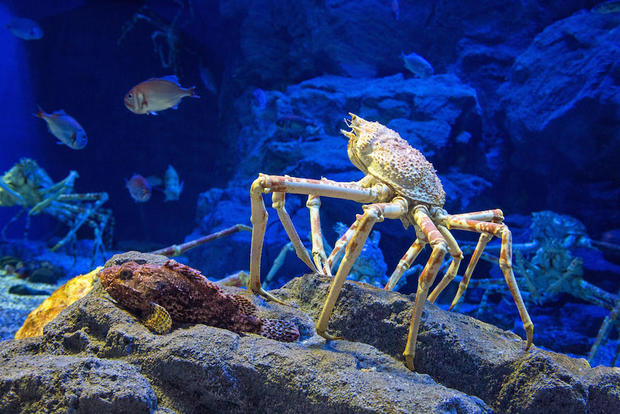
ADOBE STOCK
Arthropods (spiders, insects and other invertebrates with hard exteriors) make up the largest animal group on Earth, but only one arthropod species can claim the title of largest by size: the Japanese spider crab (Macrocheira kaempferi).
The largest Japanese spider crab on record had a leg span of 12.5 feet, said James Lamsdell, an assistant professor in the Department of Geology and Geography at West Virginia University. "But all the length is in the legs," Lamsdell said. "If you think that's cheating, then the largest modern arthropod is probably the American lobster. Old ones can get to be a little over a meter [3.2 feet] in body length, although [fisheries] don't generally let them get that old anymore."
The largest extinct arthropod is Jaekelopterus rhenaniae, a giant sea scorpion that grew to be up to 8.2 feet long, "and the claws, when extended, could have added about a meter to the total length," Lamsdell said
Largest dog

MATT WRITTLE/BARCROFT
The largest dog on record was Zeus, a donkey-size Great Dane from Otsego, Michigan, according to Guinness World Records.
At shoulder height, Zeus reached 3.6 feet. When he stood on his back legs, he towered at an impressive 7 feet, 4 inches, taller than most basketball players, Guinness World Records reported.
Sadly, the 155-lb. dog had a short life. He died at age 5 in 2014.

SHUTTERSTOCK
The largest living animal in the world is the blue whale (Balaenoptera musculus), a beast measuring 70 feet (21 meters) long. But enough about the whale. What is the largest bird, butterfly or marsupial? Live Science found 15 of the largest animals of their kind. Read on to find out who they are.
By Laura Geggel / Originally published on Live Science.
Largest bird

SHUTTERSTOCK
With a wingspan measuring up to 11.5 feet long, the wandering albatross (Diomedea exulans) is the largest living bird on Earth.
The largest bird species on record (Pelagornis sandersi) is now extinct. Its wingspan measured between 20 and 24 feet, twice as long as the modern wandering albatross's wingspan, said Daniel Ksepka, a paleontologist and curator of science at the Bruce Museum in Greenwich, Connecticut.
The heaviest living bird is the ostrich, which weighs an average of 244 lbs. The heaviest extinct bird is either the elephant bird (Aepyornis maximus) or the moa (Dinornis robustus). While the science community is split, "if you put a gun to my head, I would say Aepyornis maximus and go with 500 kg [1,100 lbs.] as the likely mass," Ksepka said. "They were, of course, flightless."
Biggest butterfly

SHUTTERSTOCK
The Queen Alexandra's birdwing (Ornithoptera alexandrae) wins first place for largest living butterfly. Its wingspan is almost 1 foot across.
However, O. alexandrae is rare — it lives in the rainforests of Papua New Guinea — and the International Union for Conservation of Nature (IUCN) lists this butterfly as endangered.
Females of the species are brown and have a wingspan of 11 to 12 inches, while the yellow, green, black and blue males are slightly smaller, with wingspans of 6.7 to 7.4 inches long, Live Science previously reported.
Largest rodent

SHUTTERSTOCK
The capybara (Hydrochoerus hydrochaeris) is the king of rodents. It stands about 2 feet tall at its shoulders, making it the largest living rodent on Earth, according to the San Diego Zoo.
The capybara is larger than its living relatives, cavies and guinea pigs. It can be found on land or wallowing in the water, where it can swim with its slightly webbed feet. The enormous rodents are native to South America.
Largest mollusk

SHUTTERSTOCK
Reaching lengths of up to 4 feet and weighing more than 500 lbs., the largest living mollusk, and bivalve for that matter, is the giant clam (Tridacna gigas).
The giant shipworm (Kuphus polythalamia) is just a tad longer, though it weighs much less. This weird marine mollusk, whose shells look like an elephant tusk, measures between 3 and 5 feet long. The animal inside is black and slimy, and measures about the length of a baseball bat, Live Science reported previously.


Largest fish

SHUTTERSTOCK
The largest fish is the whale shark (Rhincodon typus), which can reach up to 40 feet long. The colossal fish weighs about 20.6 tons, about the weight of two school buses.
These filter feeders live in tropical waters in the Atlantic Ocean and Indo-Pacific. However, the gentle giants are often caught by fisheries, tangled in nets as bycatch or struck by marine vessels. The IUCN lists the fish as endangered.
Largest marsupial

SHUTTERSTOCK
The red kangaroo (Macropus rufus) is the largest living marsupial in the world. It measures up to 5.3 feet from its head to rump, and its tail can be up to 3.6 feet long, according to National Geographic. The marsupial weighs about 200 lbs.
However, M. rufus isn't the largest kangaroo on record. That honor goes to the giant short-faced kangaroo (Procoptodon goliah), which was more than twice as heavy, at 529 lbs., Live Science previously reported. That animal went extinct about 15,000 years ago, according to the Australian Museum.
The largest marsupial on record is the four-legged Diprotodon optatum, which looked somewhat like a bear. It was 5.5 feet tall at its shoulders and just under 13 feet long, and it weighed up to 6,100 lbs. This animal went extinct about 25,000 years ago, according to the Australian Museum.
Longest snake

SHUTTERSTOCK
Out of 41 species, the reticulated python is the longest python (and snake) on record.
The longest known reticulated python measured 26.2 feet long, longer than five grand pianos lined up. It was found at a construction site in Malaysia in April 2016, and died shortly after its capture, Live Science previously reported.
That Malaysian snake was longer than Medusa, the longest captive snake in the world, which measured 25.1 feet, according to Guinness World Records.
Largest lizard

SHUTTERSTOCK
The fierce, fork-tongued komodo dragon (Varanus komodoensis) is the largest living lizard.
Male Komodo dragons measure up to 10 feet long and weigh about 200 lbs. Females are a bit smaller, growing up to 6 feet in length, Live Science previously reported.
The speedy predators have good vision and excellent senses of smell, which help them hunt large prey such as water buffalo, deer, pigs and even humans — so keep your distance!
Largest frog

IMAGEBROKER / ALAMY STOCK PHOTO

The goliath frog (Conraua goliath) is an amphibian to be reckoned with. It can grow to be longer than a foot and can weigh more than 7 lbs., making it the largest frog on record and as large as some house cats, according to the San Diego Zoo.
Goliath frogs are champion jumpers, able to leap almost 10 feet (3 m) forward, the zoo reported. But don't wait for them to croak about it; these giant frogs are mute.
Largest anthropod

ADOBE STOCK
Arthropods (spiders, insects and other invertebrates with hard exteriors) make up the largest animal group on Earth, but only one arthropod species can claim the title of largest by size: the Japanese spider crab (Macrocheira kaempferi).
The largest Japanese spider crab on record had a leg span of 12.5 feet, said James Lamsdell, an assistant professor in the Department of Geology and Geography at West Virginia University. "But all the length is in the legs," Lamsdell said. "If you think that's cheating, then the largest modern arthropod is probably the American lobster. Old ones can get to be a little over a meter [3.2 feet] in body length, although [fisheries] don't generally let them get that old anymore."
The largest extinct arthropod is Jaekelopterus rhenaniae, a giant sea scorpion that grew to be up to 8.2 feet long, "and the claws, when extended, could have added about a meter to the total length," Lamsdell said
Largest dog

MATT WRITTLE/BARCROFT
The largest dog on record was Zeus, a donkey-size Great Dane from Otsego, Michigan, according to Guinness World Records.
At shoulder height, Zeus reached 3.6 feet. When he stood on his back legs, he towered at an impressive 7 feet, 4 inches, taller than most basketball players, Guinness World Records reported.
Sadly, the 155-lb. dog had a short life. He died at age 5 in 2014.
